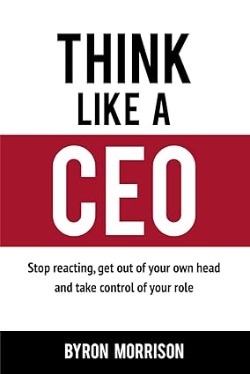Think Like a CEO: Mastering Proactive Leadership
Introduction
In today's fast-paced business environment, the ability to transition from reactive to proactive leadership is paramount. CEOs who can anticipate challenges, seize opportunities, and drive strategic initiatives are more likely to achieve long-term success. This white paper explores the key principles and strategies to help you adopt a CEO mindset and elevate your leadership capabilities.
Understanding the CEO Mindset
The CEO mindset is characterized by a unique blend of strategic thinking, visionary leadership, and decisive action. To cultivate this mindset, consider the following:
- Strategic Thinking: CEOs possess the ability to think critically about the big picture and identify opportunities that align with the organization's long-term goals. They can analyze complex problems, anticipate future trends, and develop innovative solutions.
- Visionary Leadership: Effective CEOs inspire and motivate others by articulating a compelling vision for the future. They set ambitious goals, communicate effectively, and empower their teams to achieve exceptional results.
- Decisive Action: CEOs are known for their ability to make timely decisions, even in the face of uncertainty. They weigh the pros and cons, gather relevant information, and take action with confidence.
Key Strategies for Adopting a CEO Mindset
- Develop a Growth Mindset:
- Embrace Challenges: View challenges as opportunities for growth and learning.
- Cultivate a Positive Attitude: A positive mindset can significantly impact your outlook and performance.
- Seek Feedback: Actively seek feedback from colleagues, mentors, and customers to identify areas for improvement.
- Master the Art of Prioritization:
- Identify Key Priorities: Focus on the most important tasks that will drive the greatest impact.
- Time Management Techniques: Implement effective time management strategies, such as the Pomodoro Technique or time blocking.
- Delegate Effectively: Assign tasks to capable team members to free up your time for strategic initiatives.
- Build Strong Relationships:
- Network Strategically: Build relationships with key stakeholders, both inside and outside the organization.
- Active Listening: Pay attention to others' perspectives and demonstrate empathy.
- Effective Communication: Clearly communicate your vision, expectations, and feedback.
- Embrace Continuous Learning:
- Read Widely: Stay informed about industry trends and best practices.
- Attend Conferences and Workshops: Network with industry leaders and expand your knowledge base.
- Seek Mentorship: Learn from experienced leaders and seek their guidance.
- Practice Self-Care:
- Prioritize Physical Health: Maintain a healthy lifestyle through regular exercise and a balanced diet.
- Manage Stress: Implement stress-relief techniques, such as meditation or yoga.
- Set Boundaries: Establish clear boundaries between work and personal life.
Additional Resources
- Books:
- "Think Like a CEO" by Byron Morrison
- "The 7 Habits of Highly Effective People" by Stephen Covey
- "The Power of Habit" by Charles Duhigg
- Videos:
- TED Talks on leadership, innovation, and personal development
- YouTube channels featuring business leaders and entrepreneurs
- Websites:
- Harvard Business Review
- Forbes
- Inc. Magazine
Conclusion
By adopting a CEO mindset and implementing the strategies outlined in this white paper, you can take control of your role, drive innovation, and achieve lasting success. Remember, the journey to becoming a proactive leader is a continuous process that requires dedication, perseverance, and a willingness to learn and grow.



